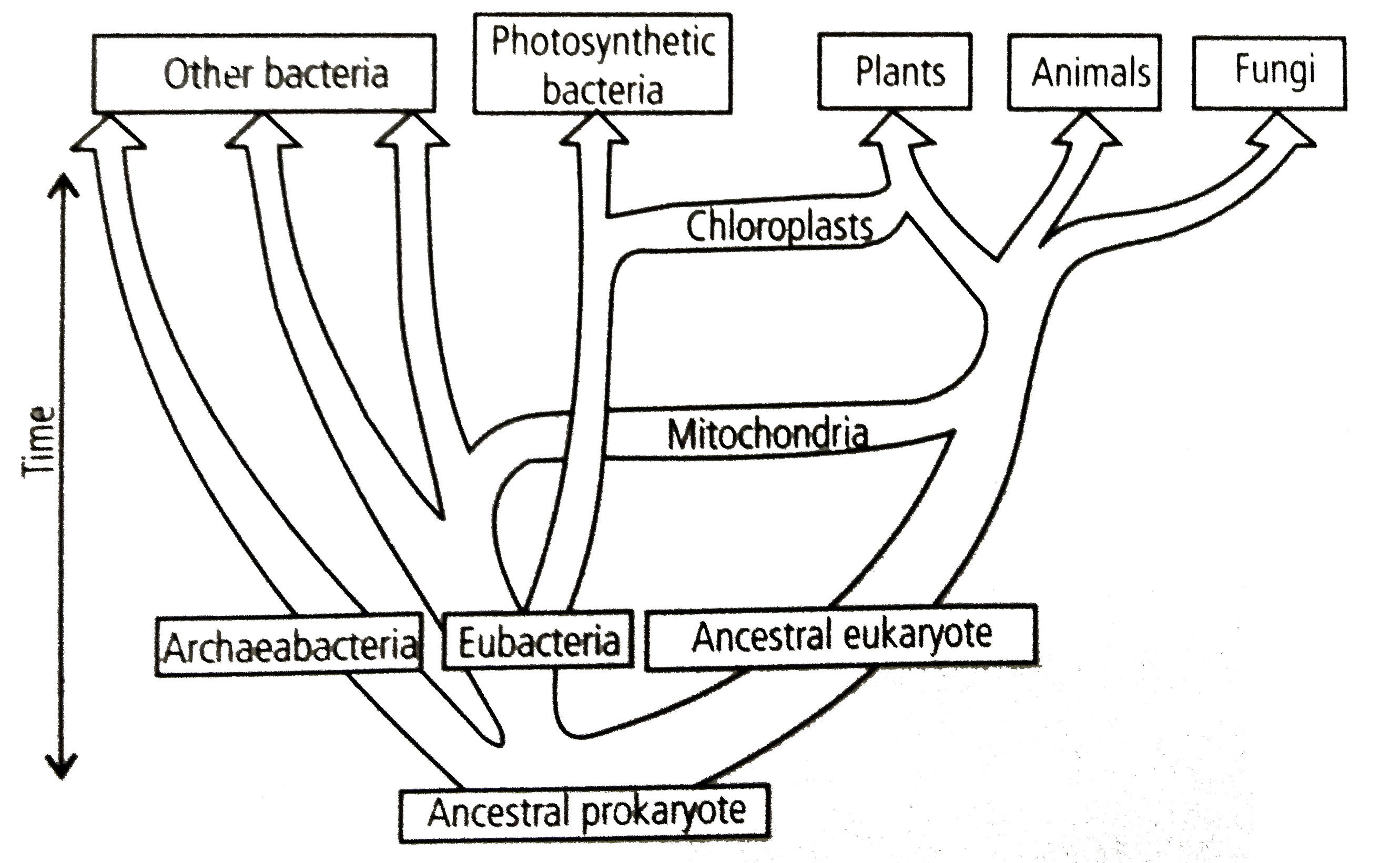[A] : Chloroplasts contain circular DNA , rRNA , mRNA and are also able to conduct protein synthesis .
[R] : Origin of chloroplasts is from the proplastids.
If both A and R are true and R is the correct explanation of A
If both A and R are true but R is not the correct explanation of A
If A is true and R is false
If both A and R are false
To solve the assertion-reason question, we will analyze both statements step by step.
Step 1: Analyze the Assertion
Assertion (A): Chloroplasts contain circular DNA, rRNA, mRNA, and are also able to conduct protein synthesis.
- Explanation: Chloroplasts are organelles found in plant cells and some algae. They are responsible for photosynthesis. One of the unique features of chloroplasts is that they contain their own circular DNA, similar to prokaryotes. Additionally, they have ribosomal RNA (rRNA) and messenger RNA (mRNA), which are essential for protein synthesis. This means that chloroplasts can synthesize some of their own proteins independently, which is a characteristic of semi-autonomous organelles.
Conclusion: The assertion is true.
Step 2: Analyze the Reason
Reason (R): The origin of chloroplasts is from the proplastids.
- Explanation: Proplastids are immature plastids found in the meristematic tissues of plants. They can differentiate into various types of plastids, including chloroplasts, chromoplasts, and leucoplasts. Therefore, it is correct to state that chloroplasts originate from proplastids.
Conclusion: The reason is also true.
Step 3: Determine the Relationship
- While both the assertion and reason are true, the reason does not explain why chloroplasts can conduct protein synthesis. The assertion discusses the capability of chloroplasts to synthesize proteins, while the reason only addresses their origin.
Final Conclusion
Since both the assertion and reason are true, but the reason does not explain the assertion, the correct option is:
Option 2: Both assertion and reason are true, but reason is not the correct explanation of assertion.
---
Assertion (A): Chloroplasts contain circular DNA, rRNA, mRNA, and are also able to conduct protein synthesis.
Reason (R): The origin of chloroplasts is from the proplastids.
- While both the assertion and reason are true, the reason does not explain why chloroplasts can conduct protein synthesis. The assertion discusses the capability of chloroplasts to synthesize proteins, while the reason only addresses their origin.
Since both the assertion and reason are true, but the reason does not explain the assertion, the correct option is:
Option 2: Both assertion and reason are true, but reason is not the correct explanation of assertion.
Topper's Solved these Questions
- KINGDOM PROTISTA (UNICELLULAR EUKARYOTES)Book:TRUEMEN BIOLOGY ENGLISHChapter:KINGDOM PROTISTA (UNICELLULAR EUKARYOTES)Exercise:MULTIPLE CHOICE QUESTIONS
Explore 185 Videos
- MICROBES IN HUMAN WELFARE Book:TRUEMEN BIOLOGY ENGLISHChapter:MICROBES IN HUMAN WELFARE Exercise:Multiple choice question
Explore 142 Videos
Similar Questions
DNA of chloroplast differs from nuclear DNA in
View SolutionAssertion : Chloroplasta occur inside the leaves mostly in mesophyll cells along their walls.
Reason: The membrane system of chloroplast is responsible for trapping the light energy and also for the synthesis of ATP and NADPH.
View Solution
Knowledge Check
Which RNA carries the amino acids from the amino acid pool to mRNA during protein synthesis?
ArRNABmRNACtRNADhnRNAGiven diagram illustrates an evolutionary tree.

Which of the following statements can be deduced from the given evolutionary tree?
(i) The ancestral eukaryotes were anaerobic.
(ii) All eukaryotes were anaerobic.
(ii) All eukaryotes possess mitochondria.
(iii) Eubacteria and Eukaryota have a common ancestor whereas Archebacteria have a unique and independent origin.
(iv) Mitochondria and chloroplasts have similar genomes.
(v) Mitochondria are presents in plants, animals and fungi.
(vi) chloroplasts and mitochondria arose asendosymbionts.
(vii) Fungi and animals lost chloroplasts during evolution.Aiii,v and viBi,v and viCii,iii,iv and vDi,v,vi and viiConsider the following statements regarding synthesis of starch and sucrose during daytime and select the correct ones.
(i) Triose phosphate is confined to chloroplast and is utilized for the synthesis of starch only.
(ii) Triose phosphate is translocated to cytosol from chloroplast.
(iii) Triose phosphate is utilized for the synthesis of both starch and sucrose.
(iv) Triose phosphate is translocated from cytosol to chloroplast.Ai and iiiBii and iiiCii and ivDiii and iv
The synthesis of a polypeptide chain or a protein from mRNA is called
View SolutionUsing recombinant DNA technology, genes from a donor cell can be inserted into a bacterium for DNA replication and protein synthesis. The kind of cells that can be used as gene donors in this technology are
View SolutionUsing recombiant DNA technology, genes from a donor cell can be inserted into a bacterium for DNA replication and protein synthesis. The kind of cells that can be used as gene donors in this technology are
View SolutionA steady current is flowing in a circular coil of radius R, made up of a thin conducting wire. The magnetic field at the centre of the loop is BL. Now, a circular loop of radius R/n is made from the same wire without changing its length, by unfounding and refolding the loop, and the same current is passed through it. If new magnetic field at the centre of the coil is BC, then the ratio BL/BC is
View SolutionA steady current is flowing in a circular coil of radius R, made up of a thin conducting wire. The magnetic field at the centre of the loop is BL. Now, a circular loop of radius R/n is made from the same wire without changing its length, by unfounding and refolding the loop, and the same current is passed through it. If new magnetic field at the centre of the coil is BC, then the ratio BL/BC is
View Solution